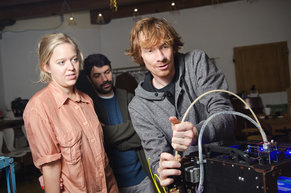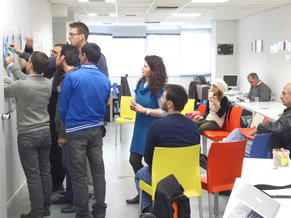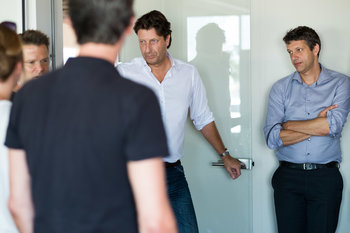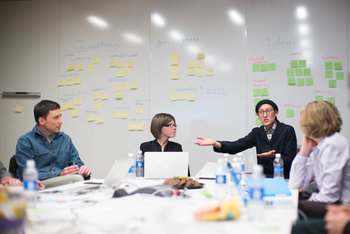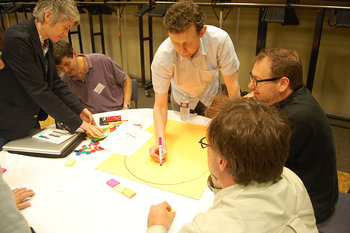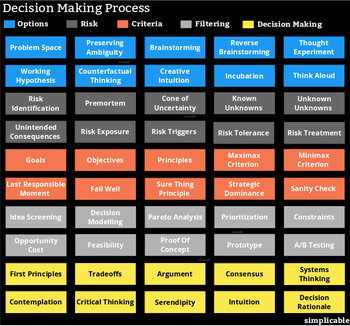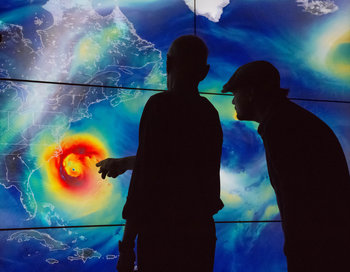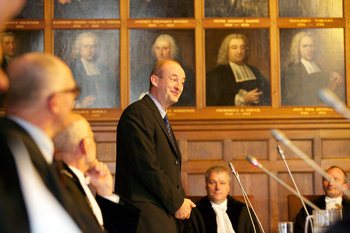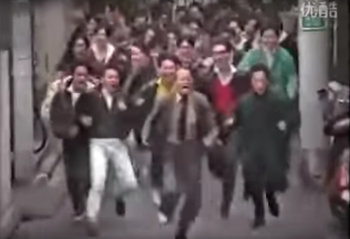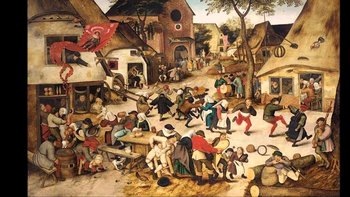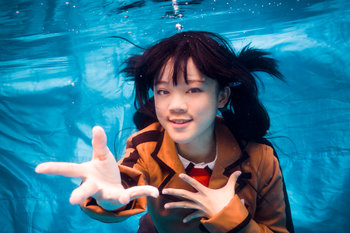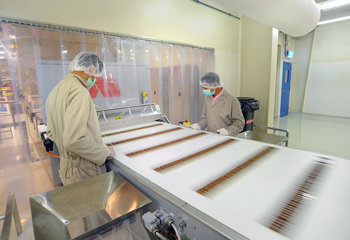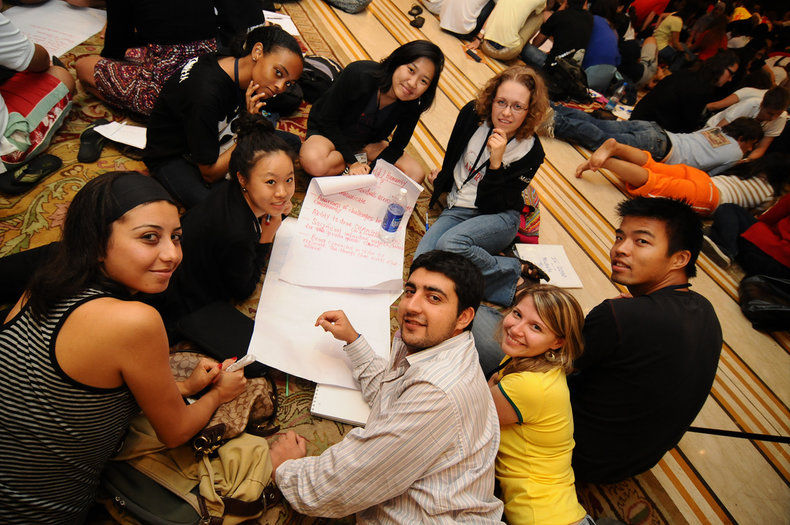
Problem Statement
Formulating a well designed problem statement.Challenging Assumptions
Challenging the fundamental ideas that you hold as an individual, team or business. Assumptions tend to be core business realities that aren't easily shaken. However, it is often a worthy exercise to see how new assumptions change your view of a particular problem.Conceptual Framework
A conceptual framework is a method for organizing information in a particular domain. A common example is the playbooks used by American football teams.Brainstorming
A group creativity technique designed to allow ideas to flow out without fear of criticism.SWOT Analysis
The practice of identifying your current strategic position in terms of strengths, weaknesses, opportunities and threats.Collective Intelligence
A general term for generating, evaluating and combining the ideas of a group. Collective intelligence draws on the diverse knowledge of a team to solve problems.Feedback Loop
A feedback loop is any process that allows the results of actions to be quickly measured. The idea is to improve your solution to a problem with each iteration until it's fully optimized.Peer Review
Peer review is a process of hardening and building credibility for a proposed solution by asking your peers to review it.Thought Experiment
A hypothesis, story or procedure that is invented in order to examine its consequences.Abstraction
Looking at a problem in general rather than specific terms by modeling it with an abstraction.First Principles
A set of known facts, theories or assumptions in a particular domain that can be used to solve problems. Using first principles in problem solving is essentially a back-to-basics approach that questions everything beyond a few foundational assumptions.Counterfactual Thinking
Thinking about the impossible. This usually means thinking back in time to evaluate decisions that you could have made but are now impossible because the time has passed. It may seem pointless to evaluate impossibilities. However, they potentially offer insights into decisions that are still possible now.Critical Thinking
A disciplined, systematic analysis of evidence that arrives at an opinion, judgement or critique.Convergent Thinking
Convergent thinking is the process of determining the correct answer to a problem. It is often contrasted with divergent thinking.Divergent Thinking
The process of thinking creatively by challenging existing assumptions and contemplating unexplored avenues of thought.Five Whys
A process of asking the question "why?" five times in sequence. The goal is to dig deeper beyond the surface of a problem to find general solutions.Logic
Processes of formal reasoning.Abductive Reasoning
Abductive reasoning is a type of bottom-up logic that allows for best guesses. It is typically used in the context of significant uncertainty.Inductive Reasoning
Inductive reasoning is a type of bottom-up logic that proposes theories based on sets of observations.Deductive Reasoning
The process of proving a theory using formal logic that guarantees logical certainty. Starts with the theory and seeks supporting observations in a top-down direction.Backward Induction
A process of reasoning backwards starting with potential conclusions and evaluating the paths that lead to each conclusion. This tends to be a lot of work and usually requires computational support. Backward Induction is a common way to implement artificial intelligence such as computer chess.Statistical Analysis
The use of probability distributions to solve problems or make predictions.Game Theory
The study of problems that can be modeled as a game. Game theory can often provide the best strategy for a given situation assuming that all other players will make logical choices.Inference
Inference is the process of developing true statements from lists of other true statements. It's a natural part of human thinking that's also used by artificial intelligence.Model
A model is a standardized way to view a structure or process in a particular domain. They are used to view business information for the purposes of problem solving and decision making. In other words, models are a way to turn raw information into usable knowledge.Pareto Analysis
Pareto analysis is based on the idea that 20% of actions produce 80% of results. It's typically applied to prioritization of activities but has countless applications.Test And Learn
A basic problem solving technique that involves a successive set of experiments designed to explore a solution space.A/B Testing
A/B testing is a hypothesis testing method that compares the results of two experiment configurations. In many cases, a control is compared against an experiment.Best Practice
A process or technique that is generally excepted to be the best known approach to a common business scenario.Jugaad
A jugaad is a practical small scale innovation or workaround. The term originated as a way to describe the work of talented street mechanics in India who operate with extremely limited resources.Pattern
A pattern is a general, reusable solution to a common problem that is used to avoid reinventing-the-wheel. Patterns are widely used to solve computer programming problems. Business best practices can also be viewed as patterns.Tradeoffs
Often a solution to a problem is really a choice of tradeoffs. For example, cost vs quality is a typical business tradeoff. Such problems can be explored by modeling to view the range of possible combinations.Tweaking
The process of making minor changes to a complex system.Debottlenecking
The process of identifying and clearing constraints commonly known as bottlenecks that limit the output of an organization, process or procedure.Troubleshooting
Troubleshooting is a logical, systematic search for a solution to a problem. Particularly useful to address problems that reoccur on a regular basis.Working Hypothesis
A working hypothesis is a solution to a problem that's tentatively accepted until it can be tested or a better solution can be found. In other words, it is a problem solving technique that involves going with your best guess and then trying to confirm results.Paradigm
A paradigm is a standard way of doing things such as a business model or common business practice such as meetings. In the 1980s, it was fashionable to describe innovation as a paradigm shift.Serendipity
Serendipity is a term that's used to describe the role of chance in problem solving. In many cases, complex problems that have been intensively researched for decades or more are suddenly solved in a moment of inspiration.Flow
Flow is a term to describe a state of intense concentration that is thought to be important to solving problems.| Overview: Problem Solving Techniques | ||
Type | ||
Definition | The process of developing plans to solve a problem. | |
Related Concepts | ||

